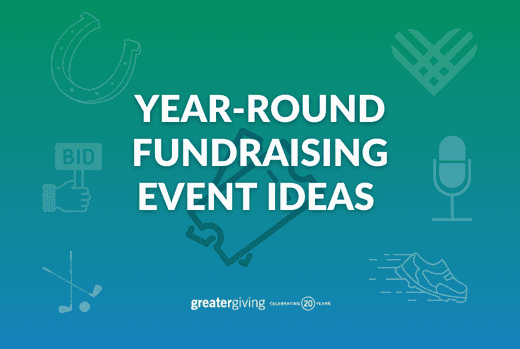Nonprofit Agency: Exactly How to Optimize Your Impact with Expert Assistance
Nonprofit Agency: Exactly How to Optimize Your Impact with Expert Assistance
Blog Article
The Duty of Community Involvement in Nonprofit Fundraising: Structure Lasting Relationships for Lasting Assistance
Area involvement is significantly identified as an important element of successful not-for-profit fundraising. By promoting real relationships with neighborhood stakeholders, organizations can cultivate depend on and commitment, which are vital for sustainable assistance. Nevertheless, the approaches and strategies employed to engage neighborhoods vary widely, increasing vital questions regarding effectiveness and influence. What are the very best practices for growing these important links, and just how can nonprofits gauge their success in this arena? Comprehending these dynamics could significantly affect the future of fundraising initiatives and the general mission of not-for-profit organizations.
Understanding Area Involvement
Community involvement is a crucial part of effective not-for-profit fundraising initiatives. Nonprofits need to recognize key stakeholders-- such as community participants, local organizations, and various other companies-- to create effective interaction methods.
Effective area engagement is predicated on energetic listening and responsiveness to the requirements and rate of interests of the community. This procedure includes soliciting comments, recognizing community characteristics, and making certain that the organization's goal aligns with neighborhood priorities. Engaging the neighborhood can take numerous types, consisting of public meetings, volunteer chances, and collaboration campaigns, each developed to motivate participation and financial investment in the company's goals.
In addition, community interaction need to be come close to as a continuous dialogue instead of an one-time initiative. By cultivating an inclusive setting where community voices are listened to and valued, nonprofits can build a solid structure for future fundraising undertakings. Inevitably, a deep understanding of community interaction encourages organizations to create authentic connections that boost their total efficiency and sustainability.
Benefits of Solid Relationships
Solid partnerships created via area engagement return many benefits for not-for-profit fundraising initiatives. Primarily, these partnerships foster depend on and reputation, important parts in motivating benefactors to contribute. When prospective supporters see a nonprofit actively included in their community, they are more most likely to believe in its objective and impact.

Moreover, these connections help with effective interaction. Nonprofits can leverage their connections to share stories of impact, updates, and requires, guaranteeing that advocates stay informed and engaged. This open line of communication not only reinforces bonds yet also urges referral promotion, increasing the nonprofit's reach.
Finally, solid area ties can attract new companions and enrollers. Companies and individuals are a lot more likely to align with companies that demonstrate meaningful neighborhood involvement, offering additional sources and support that can considerably boost fundraising abilities. Thus, growing durable partnerships via area engagement is important to a not-for-profit's lasting fundraising success.
Techniques for Efficient Involvement
How can nonprofits efficiently involve their neighborhoods to enhance fundraising efforts? Creating targeted strategies is crucial for cultivating purposeful connections. Initially, leveraging social media systems allows why not find out more organizations to share their goal dynamically and interactively, reaching a broader target market. Routine updates, involving content, and calls-to-action can galvanize area interest and involvement.
2nd, holding neighborhood occasions, such as workshops, volunteer chances, or fundraising drives, facilitates in person interaction, permitting nonprofits to display their influence and initiatives. These occasions not just increase funds but likewise grow relationships and allow community participants to engage directly with the cause.
Third, executing tailored interaction methods can boost engagement. Tailoring messages to details benefactor segments based upon interests and past payments cultivates a feeling of belonging and financial investment in the organization's mission.
Finally, producing partnerships with regional companies and community leaders can magnify outreach initiatives. Collaborative initiatives can boost exposure and trustworthiness, demonstrating a collective commitment to the community's well-being. By integrating these strategies, nonprofits can build lasting relationships that enhance fundraising initiatives and drive lasting assistance.
Gauging Involvement Success
While involving the neighborhood is important for effective nonprofit fundraising, determining the efficiency of these interaction efforts is just as vital. Establishing clear metrics enables companies to evaluate how well they are attaching with their audience and attaining their fundraising goals. Trick performance signs (KPIs) such as benefactor retention rates, volunteer involvement degrees, and interaction on social media sites systems give concrete data for evaluation.

On a regular basis analyzing these metrics enables companies to pivot their strategies when needed, guaranteeing that area engagement stays straightened with their overall objective. In addition, sharing these results with stakeholders fosters transparency and builds trust fund, motivating further area participation. Ultimately, a durable dimension structure not only educates future fundraising efforts however also reinforces the partnership in between the nonprofit and its fans, laying the foundation for sustainable success.
Study in Area Effect
Many situation researches highlight the extensive impact that community engagement can carry nonprofit fundraising success. One remarkable example is the "Something to chew on" initiative, where a local food financial institution partnered with schools and businesses to host community suppers. These events site not only raised funds yet likewise cultivated a sense of belonging among participants, significantly raising contributor retention rates.
Another engaging case is the "Green Spaces Project," which involved local homeowners in the revitalization of urban parks. This initiative not just gathered financial backing from regional businesses however likewise grew a volunteer base that added to recurring upkeep and programs. The sense of ownership and pride among area members converted right into continual contributions.
In the realm of arts, the "Art for All" campaign successfully involved neighborhood musicians and patrons to produce collective art installations, bring about enhanced presence and contributions for a neighborhood arts nonprofit.
These examples highlight that when nonprofits prioritize neighborhood involvement, they can produce lasting partnerships that improve fundraising efforts, ensuring sustainable support and fostering a vibrant neighborhood society. Such situations show that area engagement is not just a technique yet a read the full info here crucial column of nonprofit success.
Conclusion
In conclusion, area engagement is integral to the success of not-for-profit fundraising efforts. Ultimately, a robust structure of community assistance not just magnifies fundraising potential but also grows a society of collaboration, necessary for accomplishing long-term organizational goals and maintaining significant impact. fundraising consultant.
Nonprofits need to identify essential stakeholders-- such as neighborhood members, regional services, and other companies-- to produce reliable involvement strategies.

In verdict, community engagement is indispensable to the success of not-for-profit fundraising initiatives.
Report this page